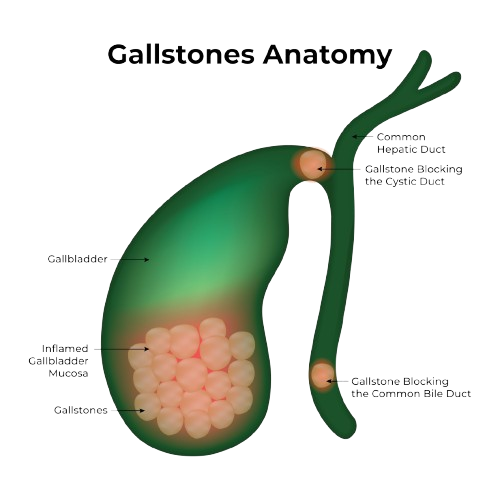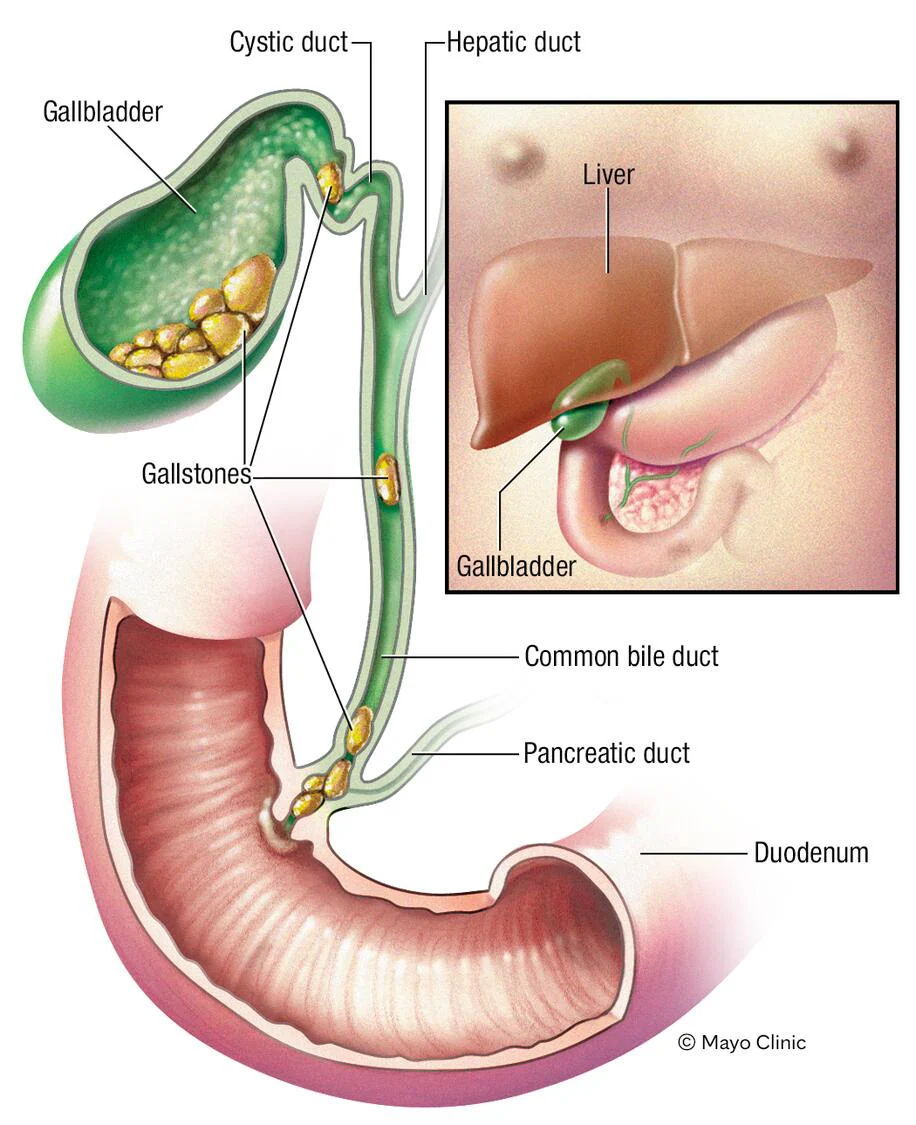Gallstones and Biliary Disorders What You Should Know
💡 What Are Gallstones?
Gallstones are small, hard deposits that form in the gallbladder – a small
organ under your liver that stores bile (a digestive juice). These stones may be made of
cholesterol or bile pigments and can range in size from a grain of sand to a golf ball.
⚠️ Why Do Gallstones Matter?
Gallstones may block the flow of bile, leading to pain, inflammation, or
infection. Some people never have symptoms, but when the stones cause trouble, they need
treatment.
⚙️ Common Symptoms of Gallstones:
- Sudden pain in the upper right or middle abdomen
- Pain after fatty meals
- Nausea or vomiting
- Indigestion, bloating
- Yellowing of eyes/skin (jaundice) if the bile duct is blocked
- Fever with chills (may indicate infection)
This pain is called biliary colic and typically lasts from 30 minutes to
several hours.
🔍 What Causes Gallstones?
- High cholesterol in bile
- Obesity or rapid weight loss
- Family history
- Female gender, especially during pregnancy or on birth control pills
- Diabetes or liver disease
🧪 How Are They Diagnosed?
- Ultrasound best initial test
- Blood tests – to check for liver function or infection
- MRCP or CT scan – if complications or bile duct stones are suspected
💊 How Are Gallstones Treated?
1⃣ No Symptoms? (Silent Stones)
- No treatment needed unless they cause problems.
2️⃣ Mild Symptoms:
- Pain relief – Antispasmodics or NSAIDs
- Low-fat diet to prevent attacks
- Ursodeoxycholic acid (in selected cases) – dissolves cholesterol stones
over months; used when surgery isn’t possible. Not effective for large or pigment stones.
3️⃣ Severe or Recurrent Pain:
- Surgery (Laparoscopic Cholecystectomy) – removal of the gallbladder is the
best option for long-term relief. It is safe and commonly performed as day-care or short-stay
surgery.
🚨 What If the Stone Slips into the Bile Duct?
This is called Choledocholithiasis (stone in the common bile
duct). It can block bile flow and cause serious complications:
Possible Problems:
- Jaundice
- Cholangitis – infection of the bile ducts (fever, chills, severe pain)
- Pancreatitis inflammation of the pancreas due to duct blockage
🛠️ How Is Choledocholithiasis Treated?
✅ ERCP (Endoscopic Retrograde Cholangiopancreatography):
- A special endoscopy procedure done to remove stones from the bile duct.
- The doctor passes a tube through the mouth to the small intestine and uses
instruments to open the duct and extract the stone.
ERCP may be followed by surgery (gallbladder removal) to prevent future stone
formation.
🏥 Combined Treatment Approach:
- ERCP – to remove duct stones
- Laparoscopic surgery – to remove gallbladder (usually within a few days)
✅ Good to Know:
- You can live a healthy life without a gallbladder.
- After surgery, most people digest food normally.
- A temporary mild intolerance to fatty foods may occur.



